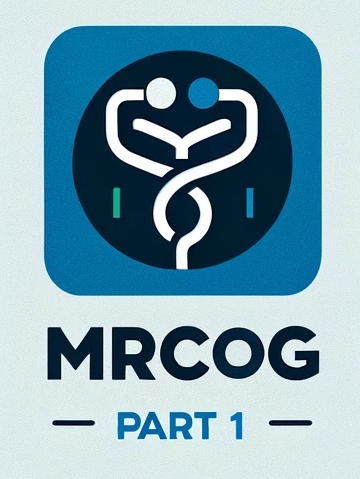Mastering the Foundation: A Guide to MRCOG Part 1 Success
Understanding the Importance of MRCOG Part 1
The MRCOG Part 1 exam is the first and most critical milestone in the journey to becoming a member of the Royal College of Obstetricians and Gynaecologists. Designed to assess a candidate’s understanding of the basic and clinical sciences relevant to the specialty, this examination lays the foundation for advanced medical training in obstetrics and gynaecology. It covers subjects like anatomy, physiology, pharmacology, and pathology, all tailored to the needs of aspiring specialists. Success in Part 1 not only demonstrates academic proficiency but also reflects a candidate’s readiness for the demanding clinical aspects of the field. With global recognition, passing MRCOG Part 1 opens doors to esteemed training opportunities and enhances career prospects in both national and international healthcare settings.

Planning an Effective Study Strategy
A strategic approach to MRCOG Part 1 Preparation is essential for success. This involves understanding the syllabus thoroughly, choosing the right resources, and creating a realistic timetable. Many candidates find it helpful to divide their study schedule into specific blocks for different topics, with regular revisions and mock tests integrated throughout. Time management plays a crucial role; allocating time wisely ensures that every subject is given appropriate attention. Additionally, candidates should make use of active recall methods and spaced repetition to strengthen long-term retention. Joining study groups or forums can offer the benefit of peer support and shared learning, helping to identify knowledge gaps early. Ultimately, consistent effort over a period of months yields the best results, enabling aspirants to tackle the exam with confidence and clarity.
Choosing the Right Study Resources
Quality resources are pivotal to effective preparation for MRCOG Part 1. These include textbooks, online platforms, video lectures, and past exam questions that align with the current syllabus. The key is to find materials that explain complex topics in a clear and concise manner. Many candidates prefer using question banks to simulate the exam environment and improve their critical thinking skills. In the middle of your preparation journey, using topic-specific guides and practice tests can significantly enhance your understanding of weak areas. It is also advisable to refer to official RCOG recommendations to ensure alignment with the latest curriculum. Whether self-studying or taking a guided course, the right tools can drastically improve the efficiency and effectiveness of MRCOG Part 1 preparation efforts.
Overcoming Common Challenges
Many candidates face mental and academic hurdles during their preparation. The vast syllabus, combined with personal and professional responsibilities, can lead to stress and burnout. Recognizing these challenges early allows aspirants to implement healthy coping mechanisms. Taking regular breaks, maintaining a balanced lifestyle, and practicing mindfulness can greatly reduce anxiety levels. In the middle of such periods, revisiting your motivation for pursuing a career in obstetrics and gynaecology can provide much-needed clarity and strength. Support from mentors, friends, and fellow candidates is also invaluable. Moreover, learning from previous failures—either personal or shared—can offer deep insights into how to improve. Facing the MRCOG Part 1 is not just a test of knowledge but also of endurance, discipline, and self-belief.
Conclusion: Taking the Next Step with Confidence
Success in MRCOG Part 1 is a result of focused preparation, disciplined study habits, and unwavering commitment. By approaching the exam with a well-structured strategy and the right resources, candidates can overcome the hurdles and achieve their professional goals. For those seeking structured guidance, expert support, and a proven study plan, platforms like CrashMRCOG.com offer comprehensive assistance tailored to meet individual learning needs. With the right mindset and resources, aspiring obstetricians and gynaecologists can confidently progress to the next phase of their medical journey.
Comments
Post a Comment